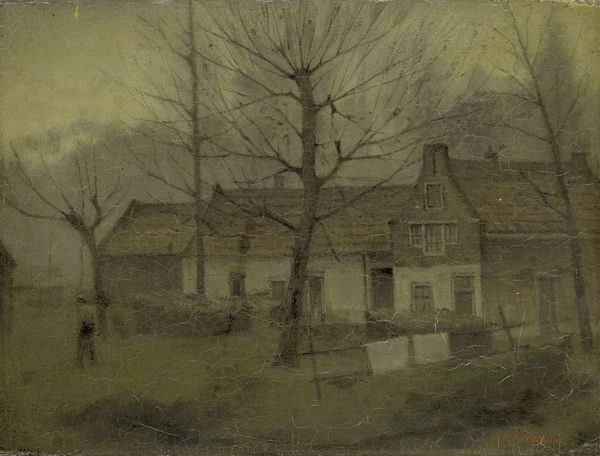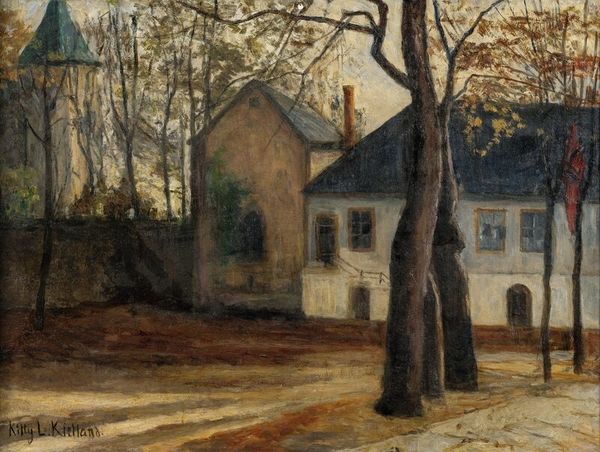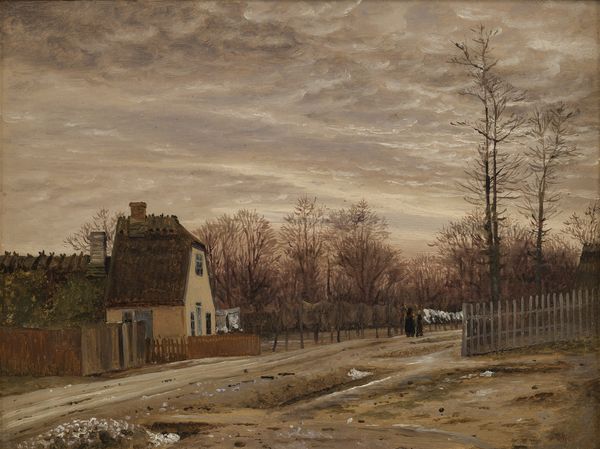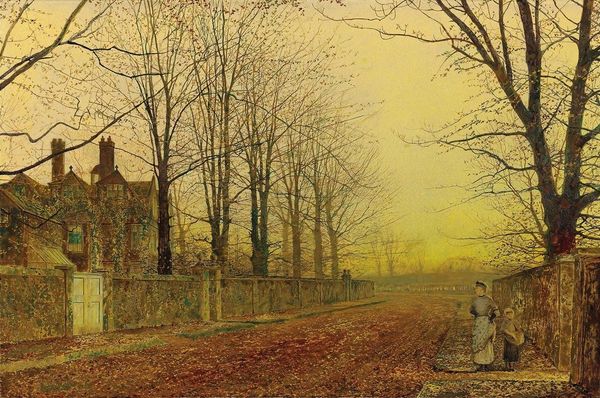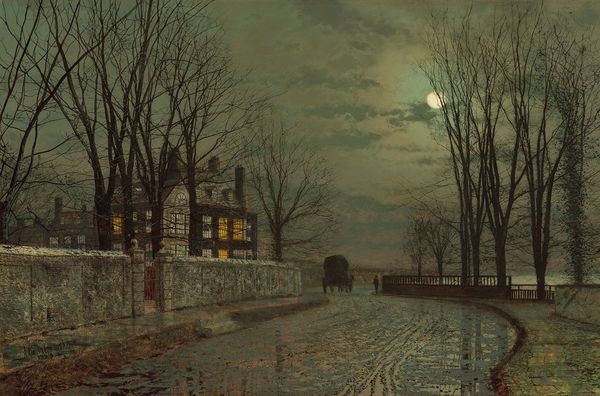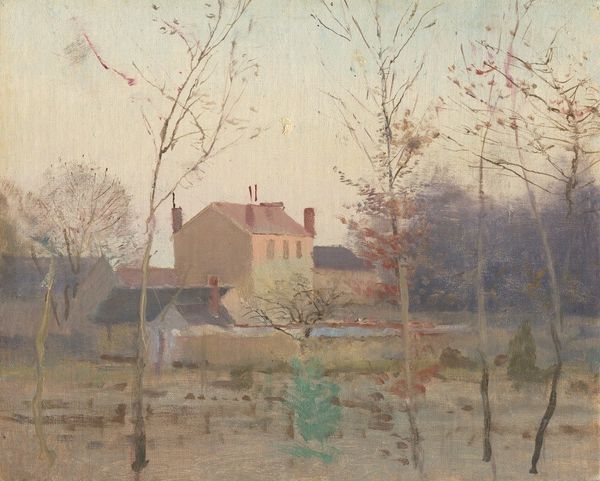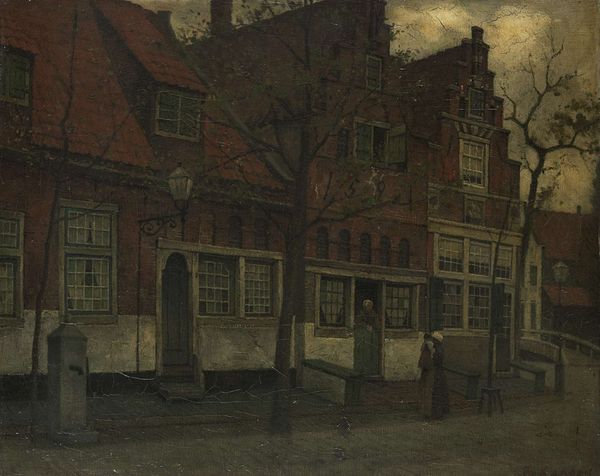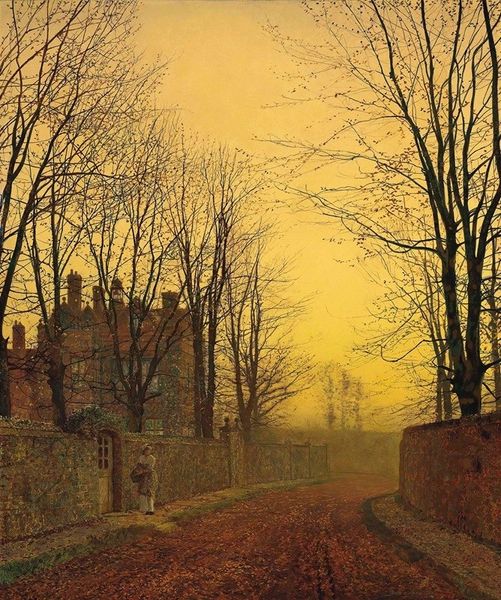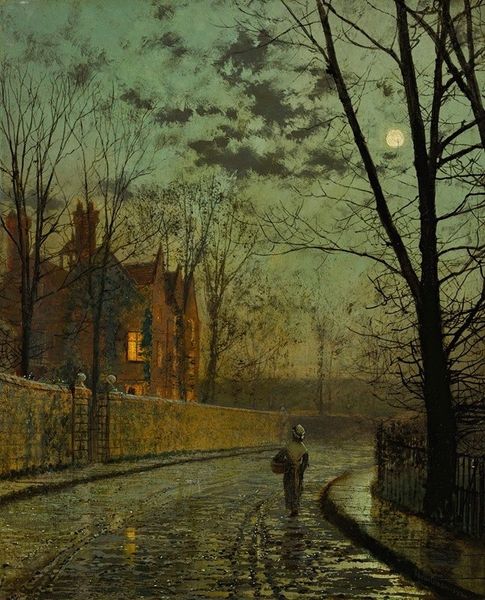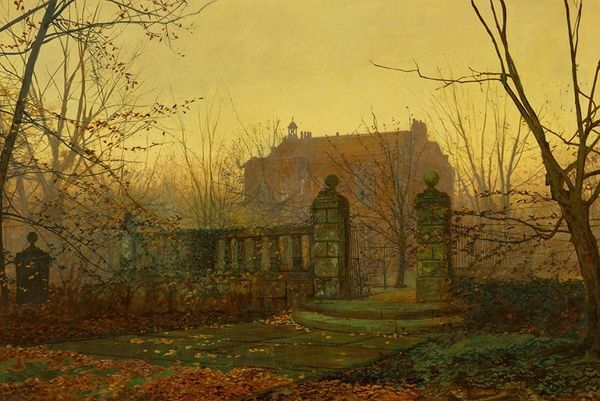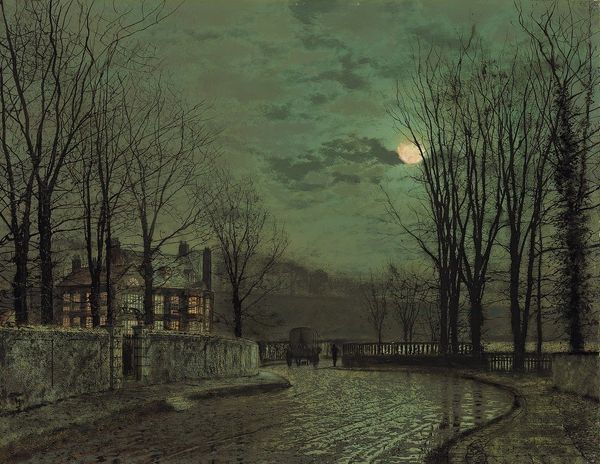
Copyright: Public Domain: Artvee
Editor: We’re looking at John Atkinson Grimshaw's "Yew Court, Scalby" from 1877, painted in oil. I'm immediately drawn to how the glowing windows create such a contrast with the otherwise muted and somber night scene. What catches your eye about this piece? Curator: It's interesting that you focus on the windows because they signal a very specific societal viewpoint, don't you think? Think about the role of artificial light in the Victorian era – it’s still relatively novel, only accessible to the affluent. The artwork highlights class differences through this stark contrast of light and shadow, literally illustrating who can afford to defy the darkness. What do you make of the lone figure on the road? Editor: That's a perspective I hadn't considered. He seems to be further emphasizing this division; almost separate from the warm glow emanating from the house. Does this separation suggest a commentary on societal isolation as well? Curator: Exactly! Grimshaw was known for capturing the changing urban landscape, and this painting places that societal shift in sharp focus. We see the rise of industrialization's inequalities painted onto the very fabric of daily life. How do you think its display in a museum setting might change that original intent, or add a layer to that commentary? Editor: It definitely brings new weight to it – making us viewers complicit in the act of looking, as beneficiaries of this art being displayed here. The painting then seems less about the aesthetic pleasure and more of a prompt for social introspection. I didn't initially view it that way. Thanks! Curator: Absolutely! Art doesn’t exist in a vacuum; its meaning is always co-created, transformed and amplified when displayed to a viewing audience, particularly when framed by museum’s political context and institutional authority.
Comments
No comments
Be the first to comment and join the conversation on the ultimate creative platform.
